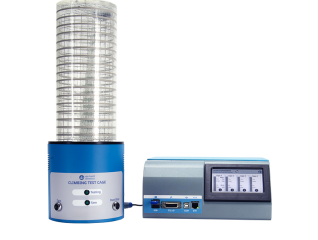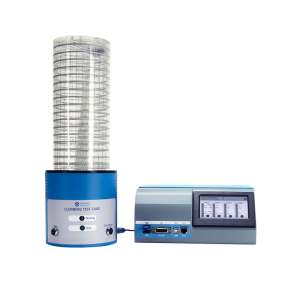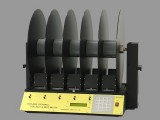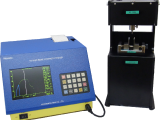Introduction:
The Ugo Basile Climbing Test, developed in collaboration with the laboratory of Prof. Sidney Negus from Virginia Commonwealth University, facilitates measurement of the vertical movement of rodents, a parameter which has not been widely investigated so far, in spite of the fact that rodents are animals that live in a 3D space and hence the analysis of XY position only is a limitation in many current studies. The Climbing Test aims to provide a simple and automated tool to measure vertical climbing movements within a grid cylinder to inform all the scientists that are interested in this crucial parameter for their research.
Main Features:
The Climbing Test features conductive sensors to track Z movements, allowing for automated measurement of time climbing, distance travelled, time on ceiling, and tracking of climbing episodes. The electronic components of the system allow for touch-screen control. Secure and convenient transfer of data to your network or application is possible through the integrated USB and LAN ports.
Application:
Certain diseases and conditions affect rodents’ climbing abilities. For example, neurodegenerative disorders can impair their motor skills and climbing behavior. Researchers use these changes in climbing behavior to study and test potential treatments for such diseases.
In summary, climbing behavior in rats and mice is not just a simple activity but a multifaceted aspect of their biology with implications for their well-being, natural behavior, and various fields of research.
It provides valuable insights into their physiology, behavior, and responses to environmental and genetic factors, making it an essential component of biological and biomedical studies involving these rodents.
- Ethological Perspective: climbing is a natural behavior in rats and mice in the wild. They use climbing to access food, escape from predators, explore their environment, and find shelter. Studying climbing behavior allows researchers to gain insights into their natural habitat and evolutionary adaptations.
- Behavior and Physiology: climbing behavior reflects the rodents’ muscular and skeletal capabilities. It involves coordination, strength, and agility. Understanding their climbing abilities can provide insights into their neuromuscular systems, balance, and sensory perception.
- Environmental Enrichment: in laboratory settings, providing opportunities for climbing is an important aspect of environmental enrichment. Rats and mice kept in captivity benefit from a stimulating environment that mimics their natural habitat. Climbing structures in cages promote physical and mental exercise, reducing stress and improving overall well-being.
- Research Models: Rats and mice are commonly used as model organisms in biomedical research. Their climbing behavior can be relevant to various research areas, including neuroscience (study of motor skills and balance), behavior (exploring effects of drugs or genetic modifications), and psychology (studying spatial cognition and learning).
- Disease Models: from stroke to depression, anxiety, skeletomuscular performance, Parkinson’s, pain, neuropathic pain and cancer pain.








